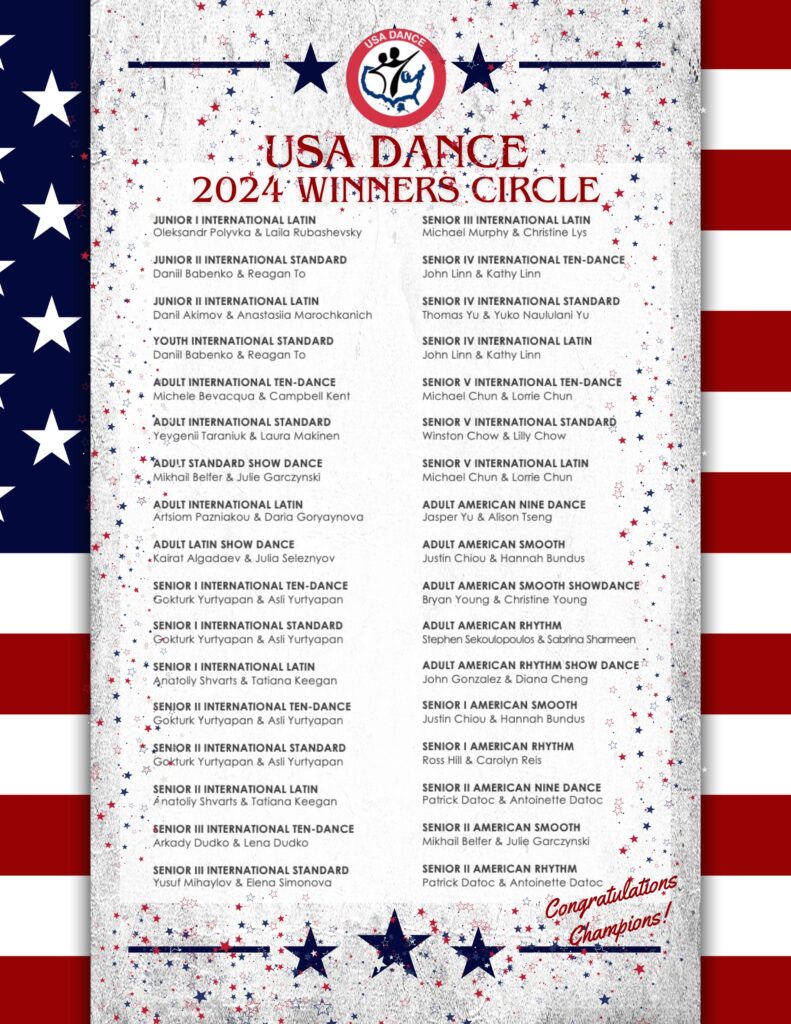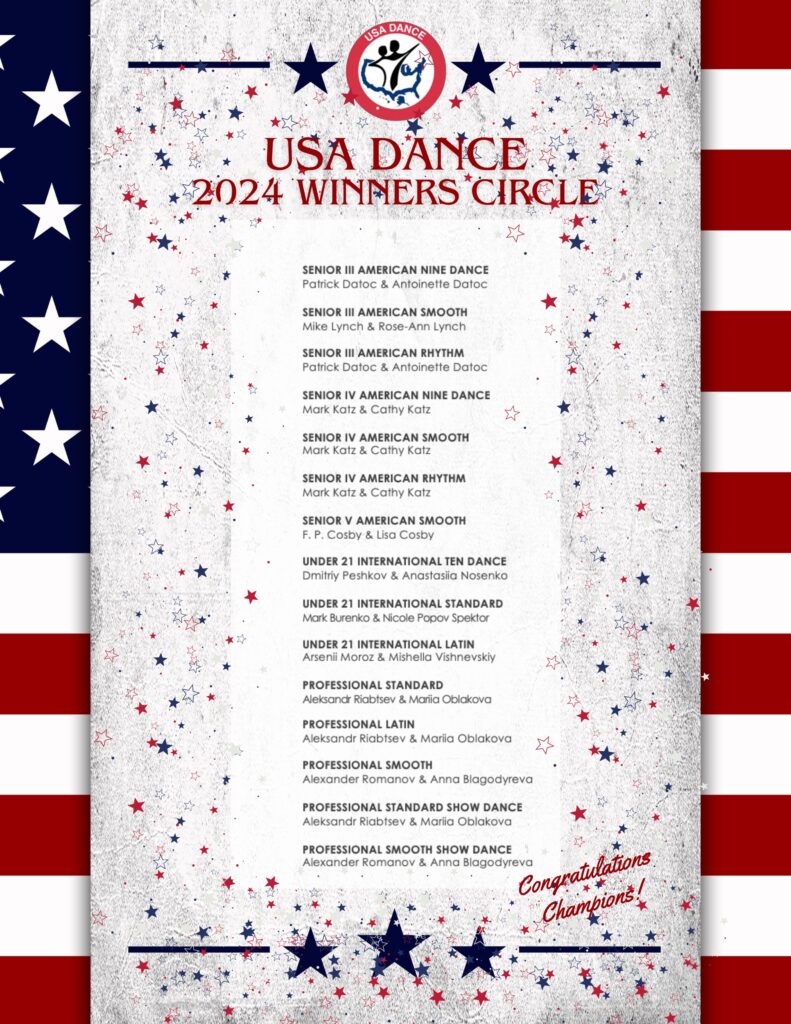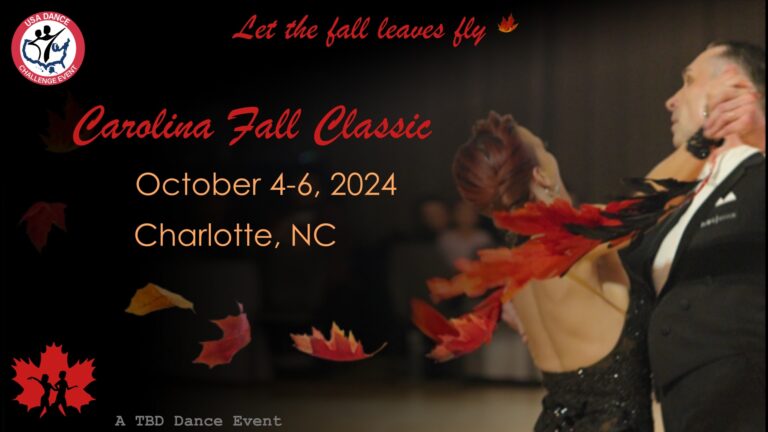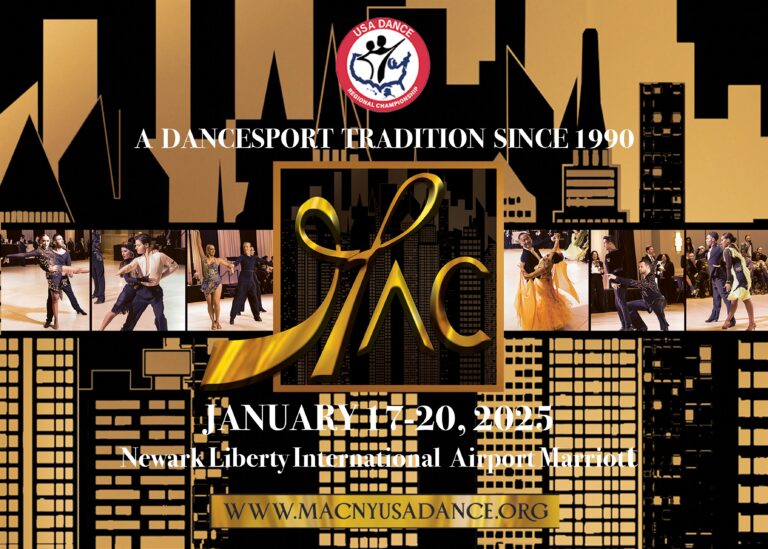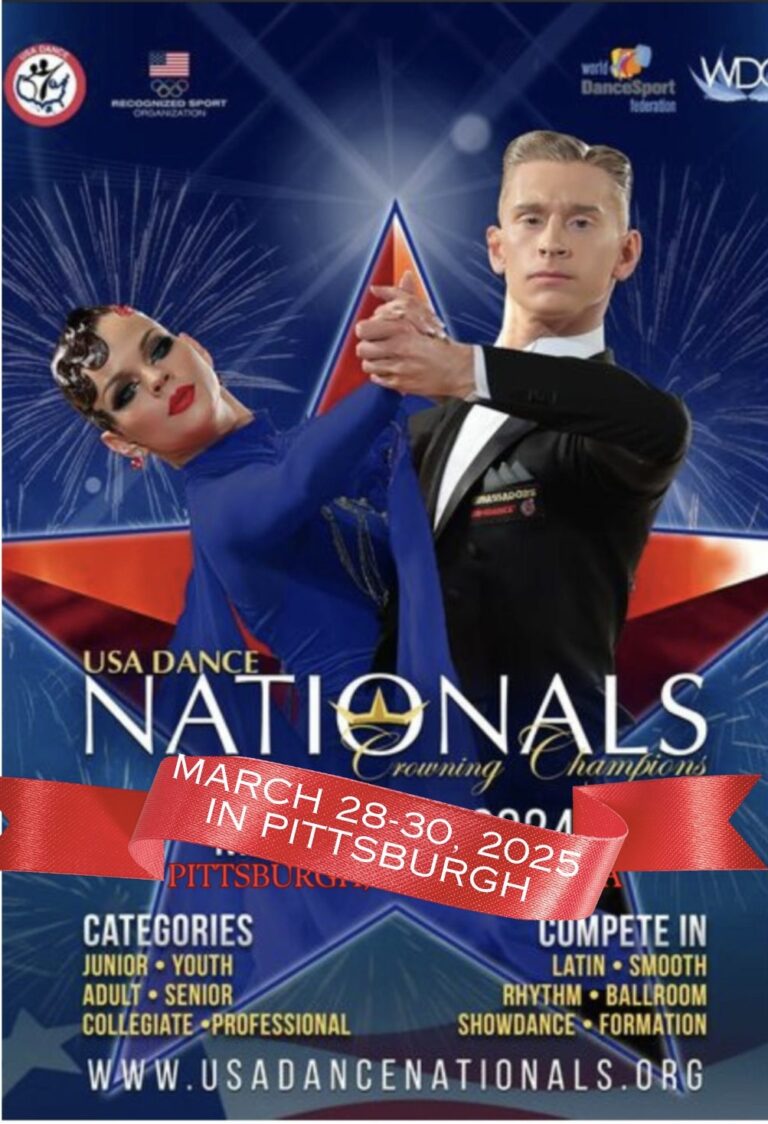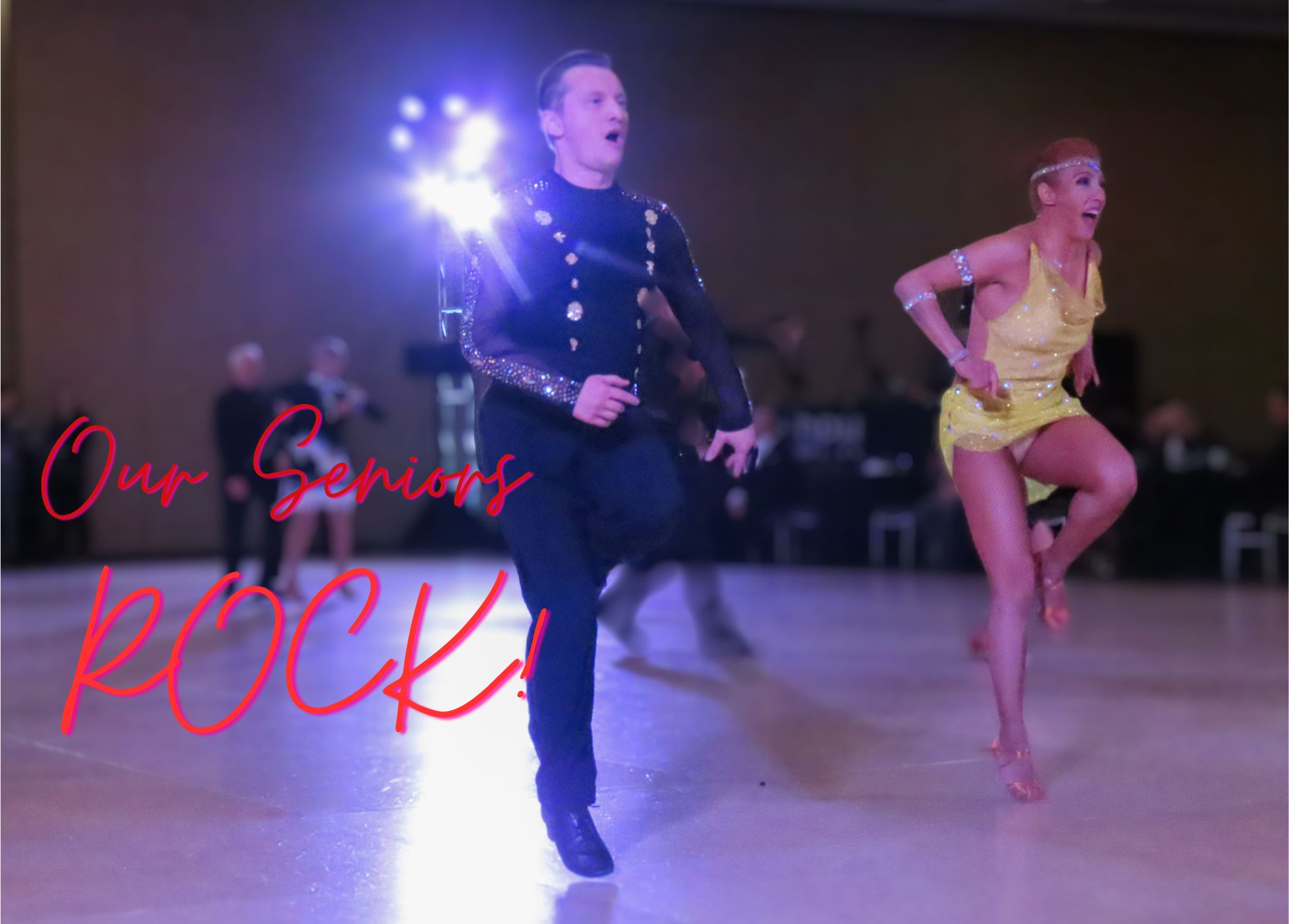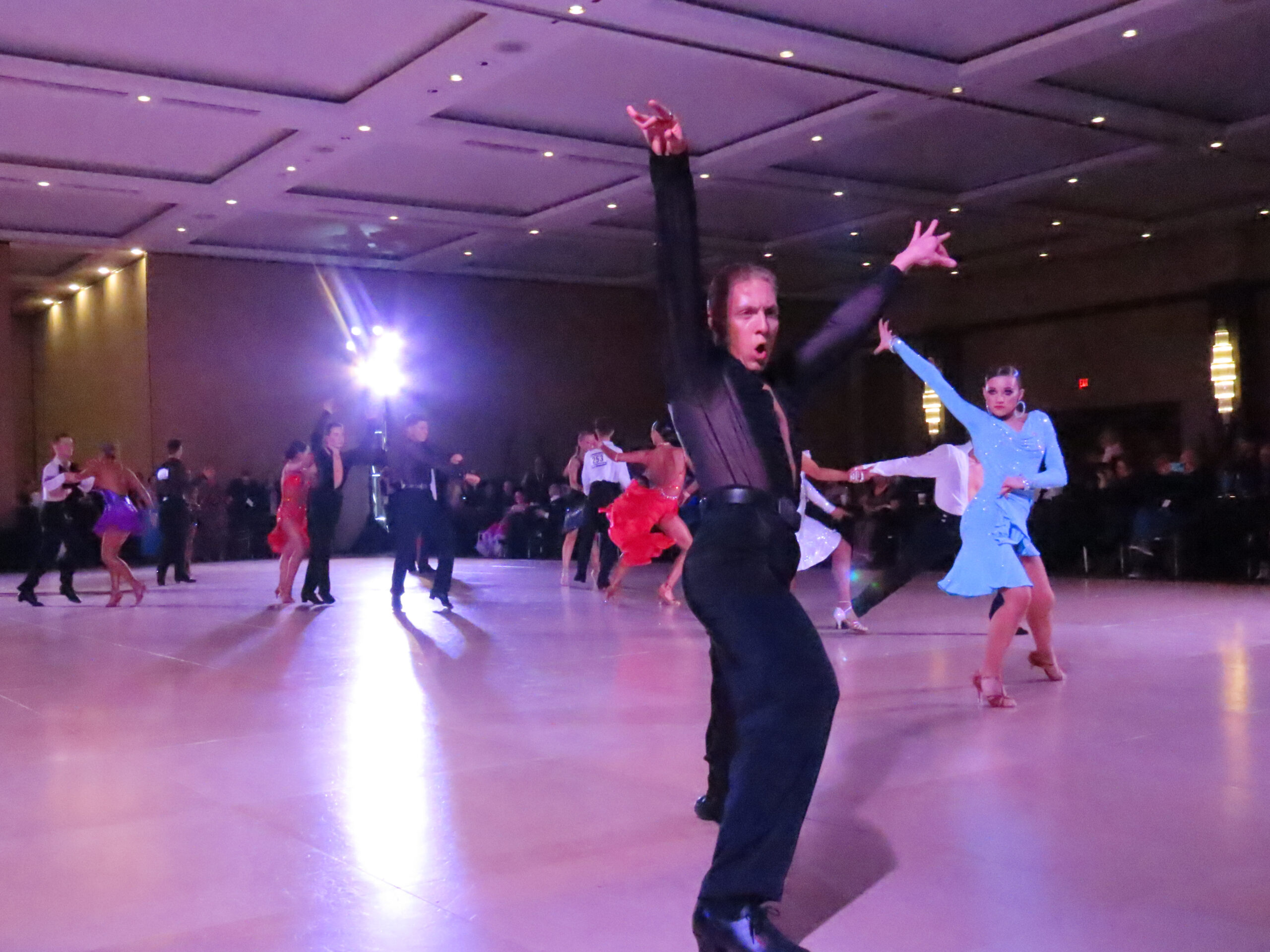The fashion industry is constantly changing, with Paris, Milan, London, and New York leading the way. If you want to know what is “the latest” you consult the cover of Vogue, attend New York or London’s Fashion Week, or watch the latest episode of “And Just Like That”. The same can be said about the Ballroom World and its fashions, only the United States is not necessarily leading the way. If you want to know what is new on the World DanceSport Federation (WDSF) dancefloor, you go to larger European events like the German Open, Rimini, or one of the GrandSlam Championship events. But since that is a little hard for everyone to do, let’s talk about what can be seen on the WDSF Standard floor today.
In the United States, ballroom spans four styles: Latin, Standard, American Rhythm, and American Smooth. Generally, Latin and Rhythm ladies sport the short, sexy skirts, while the Standard and Smooth ladies wear the longer, flowy gowns. All are beautifully adorned with stones, sequence, feathers, and frills.
Originally, Smooth attire was basically interchangeable with its Standard counterpart – ladies in full skirts with boas; Smooth gentlemen wore the same tail suits as the Standard gentlemen. For example, if you see a 1998 video of Smooth Champions David Hamilton and Olga Foraponova, you see them dancing in this style of attire. However, as American Smooth, differed more and more from International Standard, distinctions between the two became more and more apparent. For more about Smooth dresses: https://americandancer.org/your-next-smooth-dress/ Today’s Smooth dresses are much more sleek, sexy, and vibrant, but that doesn’t mean that Standard styles have stood still.
So, what is out there for the Standard lady? First, a little history…don’t worry, I won’t go back too far.
Competitive ladies in the 1950s and 1960s wore lovely gowns with interchangeable skirts, that transformed from long (Standard) to short (Latin). As the longer skirts were often sitting over the shorter skirts, they appeared rather stiff and puffy. Lengthwise, they fell approximately to the dancer’s calf. Dresses were generally single-toned and light colored, with few exceptions. If you saw a black and white video or photo of this time, the couples were absolutely gorgeous, but all looked relatively the same – the men wore elegant black tail suits — usually wool — with white bow ties, and the ladies were bare shouldered with big skirts.
In the 1970’s, the competitive Standard men became very daring (not really) and some began wearing their country flags or colors on their left sleeve cuff. Not to be outdone by their male counterparts, the ladies’ Standard skirts changed greatly. They became quite short, often standing almost straight out from the waist, and extending only to the top of the knees. There was no hiding footwork with so much of the dancer’s legs showing. Puffy sleeves and gauntlets were considered the style, and dresses were more vibrant and often two-or-three toned. In keeping with trending hair styles, the ladies generally wore their hair in a stylish short bob, with volume, curls, and bangs — think Marilyn Monroe or Jacqueline Kennedy.
By the late 1980s, a major change occurred again, and the ladies emerged regally covered with drapes of material. Many of the gowns extended practically down to the floor, and heavy feather boas, long sleeves, and large floats took center stage. The men no longer wore their country colors on their sleeves, but some bold gents strayed from the historic black and chose a tasteful blue, brown or grey tail suit. Although some girls still wore stylish bobs, many had longer hair styled in large, fashioned buns.
During the mid 90’s, the Standard ladies remained covered. However, the heavily feathered skirts were shortened to calf-length and the audience and judges could better see the dancers’ footwork. Then, near the end of the 90s, the ladies’ dresses started getting lighter. The boas, although still on many, were airier; the skirts were more streamlined; and the floats were tapered or non-existent. Hair styles were tightened and more sculpted, not allowing the slightest of movement during a performance. As for the men…they were all back to basic black.
The beginning of the 21st Century marked the temporary end of feather boas — although not the end of feathers — and a resurgence of larger, but wispier, floats. Ladies danced in longer, but sleeker, lighter, more form-fitting gowns that helped display a couple’s lines and athleticism. The men remained in classic black, although the tail suits were more tapered and of a lighter fabric – One manufacturer tried replacing the classic men’s cummerbund with a zipper front, but that was not necessarily well received by all, and actually nixed by the Blackpool Council. Hair styles started getting intricate and dress necklines became more unique and delicate, better displaying the ladies’ head positions and extensions. This style stood relatively steadfast until approximately 2015, when the hemline started rising to display the couples’ beautiful footwork once again. Feather boas re-emerged and floats became lacey, sheers, and even flowing ribbons.
So, you are probably thinking…Enough already, what are we wearing today?
For the most part, today’s WDSF Standard dresses remain more streamlined, lighter, and individually unique. Dress lengths vary from ankle to mid-calf, with occasional asymmetric hems and stylish slits. Feather boas made a partial comeback and are occasionally placed on the bottom of the dress. However, intricately placed feathers seem to be more the favored look. Gorgeous backs are a key feature, and nothing should be too heavy. Floats are now lighter or have given way to intricate sleeves and delicate ribbons to fill out the couple. Some girls have abandoned the idea of floats entirely for a clean line and to show pure simplicity of motion. Dress colors are dramatic.
Styles attract attention the moment a couple enters the floor, and make a statement before the dancing begins — sophisticated gowns for elegant dancing, bright gowns for fun couples, and eccentric gowns for couples trying to be different. Some WDSF girls are happy to show a little more skin and can be seen in light or completely sheer skirts, strategically placed cutouts, vibrant contrasting colors, exciting holographic fabrics, exotic arm pieces, and even the rare appearance of beautiful billowy sheer pants. Ladies, the sky is the limit.
So, you are in search of a new look. Here are a few considerations:
- Today’s judge wants to see your feet – the gowns do not extend past the top of the ankle. This will also keep you from stepping in your dress. Do you have great footwork? Go for the higher or angled skirt. If not…maybe not.
- The right fabric makes a difference – make sure you are not weighted down with something too heavy.
- Color is important. We all like black, but make sure that you don’t disappear into the many tall black tail suits that are dancing on the floor the same time you are. Dark colors are slimming, but those same dark colors can leave your couple undetectable. If you choose a dark or black dress, make sure it is well stoned and able to be seen.
- How about feathers? I personally love love love feathers! However, they aren’t for everyone. A gown with feathers is hard to clean, transport, and store. Feathers take a little more care and a lot of love. Also, make sure your partner is not allergic to your dress.
- Dress features can hide some of your dancing flaws. You don’t need to wear an overcoat, but sometimes a little something strategically placed can help. That said, don’t think you can fool the judges; they know all the tricks.
- Your dress will tell a lot about your couple before you start. Are you ready to deliver what you are promising? Is it really your style, or is it just something you liked on someone else?
- Don’t go too trendy, because some of the crazes don’t hold and you may be stuck with a dress that you might quickly get tired of wearing and may never sell.
- Look at the quality of the dress and ask what kind of stones were used in making it. There are some beautiful quality pieces out there. Others may cost the same but may not hold up or may be decorated with stones that fall apart. Check the fabric and the stitching. Make sure that items were properly stitched on, not just glued on.
- Find out if the dress is indeed brand new or if it was worn by a sponsor couple. It might not make a difference to you, but to some it is heartbreaking to find your gorgeous new dress dancing online before you ever saw it. It might also be a bargaining opportunity for you. You don’t know until you try.
- Look at the front and remember it will be attached to your partner. Really look hard at the back; it’s so important. Take pictures and videos. What does it look like in hold? Sure, you should like the dress up close, but what does it look like from across the floor. How’s the color? Will you have to tan more? Is it too long or too short? How will you clean it? Does it wrinkle? Can you pack it in a suitcase? How does it move? Will feathers be in your face, mouth, or ears while you are dancing? Will your float fly over your head during quickstep? Is the material too heavy? Is the skirt too cumbersome; will it be a nuisance to you or your partner? If your initial thought is to change this or that, perhaps it is not the right dress.
- If it is new, consider the price you can pay, the asking price, and the amount of wear you will get out of it. If you can’t afford a brand-new quality dress, consider a good second-hand dress. There are many gorgeous ones out there for sale. It is also fine to go up to a dancer and ask her to let you know when she is selling her dress. You never know…you might go home with a real bargain.
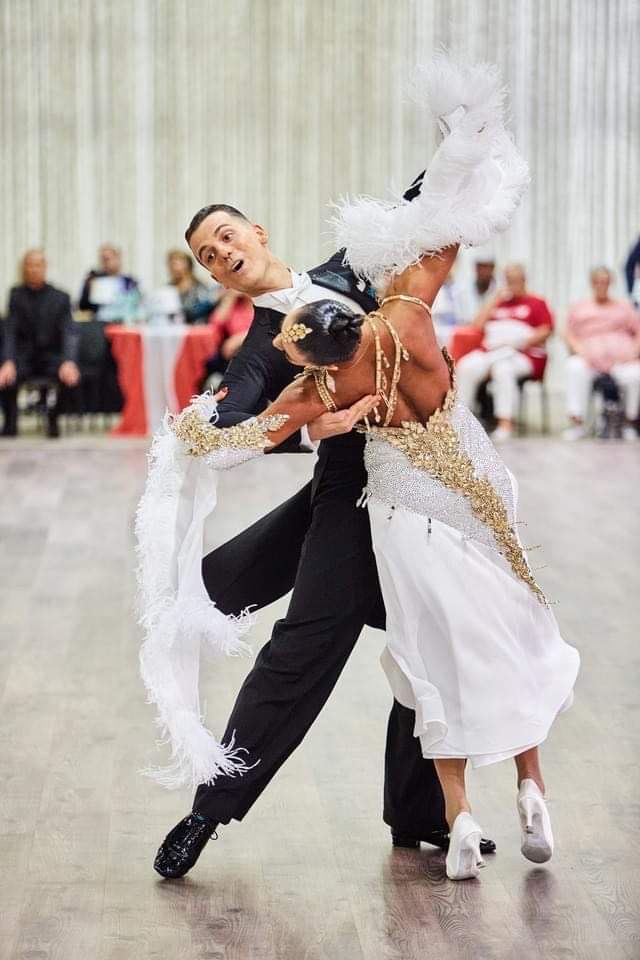
Let’s throw this one in, just to do it: Changing dresses for the final…should you do it or shouldn’t you. Good question, and there are all kinds of opinions on this one. One of my past coaches said, “Never change your dress for the final.” Another used to say, “You can dance better; go change your dress.” We see the professionals do it all the time. Perhaps you need to consider, whether it will enhance your couple or strip away its identity. Are you a well-known couple that everyone recognizes? Professionals in a final generally are, maybe you are too…maybe not so much. Does your final dress recognizably relate to your original dress, perhaps a different color version of the same dress? Also, are you going to feel more comfortable, or rushed and disheveled after changing your dress? These are all things to consider.
So now you are armed with new information, and you are ready to get a new dress. Go when you have time and have fun!!! Shop at competitions, check out consignments, and look online. Try on different styles and see what looks good on you. If you see something interesting that you are considering, don’t just ask the person selling the dress…they want to sell it. Ask your coach, ask your partner, ask your friend, ask your fellow competitors, ask the girl trying on a dress next to you.
Final thought for you when trying on dresses: If you are currently at your best dance weight, is there enough give in the dress, in case you happen to gain a few pounds? Don’t laugh, it happens and that is a very costly mistake. This final comment gives way to a quick story to end this piece. I bought a beautiful dress in 2016 when we were in Italy for a World Championship. I loved the dress then and still love it today. In 2018, Mike and I went to two back-to-back weekend competitions in Europe, and I took this great dress, because it was beautiful, light, didn’t wrinkle, and easy to pack. The dress was always a little snug, so I dropped a few pounds prior to our departure. The first weekend, we danced our first competition, and all went well. In between the competitions, along with practicing, we toured, went sightseeing, and enjoyed great food. A week later, the night before the second competition, I crawled into bed and was closing my eyes, when it dawned on me…I had been enjoying myself maybe too much. I jumped out of bed and turned on the lights in the hotel room. Mike didn’t know what was going on. I ran to the closet, grabbed the dress, tore off my pajamas, and proceeded to get dressed. Mike even had to get up to make sure the zipper would cooperate. Whew, it was a little tight, but it still fit! Lesson learned: Be leery of tight dresses – or – Don’t enjoy yourself too much between competitions.
Happy shopping! Happy dancing!


